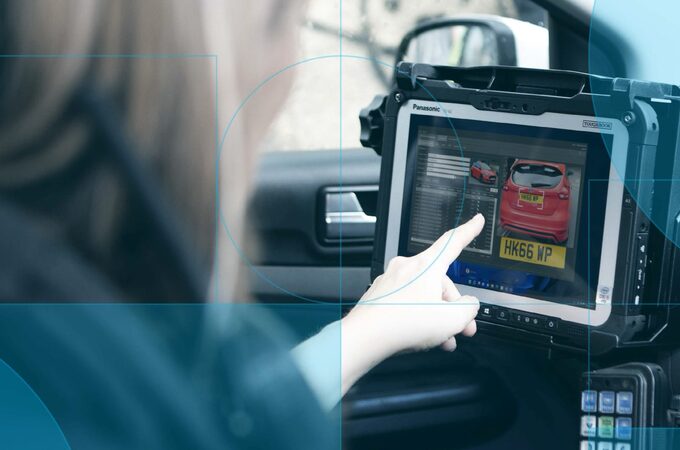Visions of the Future: How Computer Vision Technology is Transforming Industries
Breadcrumb
Visions of the Future: How Computer Vision Technology is Transforming Industries
"As Computer Vision technology verges on the edge of widespread implementation, we undertook this research to learn more about the use cases, expectations, and barriers – both practical and ethical – around its adoption. As we look forward to a future where AI solutions complement and interact with each other, we also explored how the same respondents see generative AI technologies influencing their organisation."

Head of AI
Panasonic Connect Europe
At a glance findings
Productivity expectations are high.
On average, respondents anticipate a productivity increase of 42%, rising to 52% in manufacturing and dropping to 32% in location-based entertainment.
These variations are likely related to its use cases in each sector – while manufacturing applications are likely to increase the quantity of output organisations can deliver, in locationbased entertainment the focus is much more on the quality of user experiences; providing better experiences rather than more of them.
Computer Vision technology is used across a wide variety of business departments and applications.
Practical activities such as repairs and maintenance, production line monitoring, and Practical activities such as repairs and maintenance, production line monitoring, and quality control slightly outweigh use in security and health and safety. control slightly outweigh use in security and health and safety.
Applications in logistics and supply chain are popular, along with real-time projection mapping and people tracking, demonstrating the broad scope of use cases relevant to Computer Vision technology.
Practical barriers relate to support, knowledge, and implementation costs.
Installing new technologies is only the first step. Organisations report that they are struggling to find third-party support.
High demand for skills in new technology areas often results in battles for talent, with companies struggling to retain knowledge within the business as employees are tempted by high salaries elsewhere. High costs are always a consideration, too, especially for early adopters, and our research bears this out.
Ethical concerns show organisations are aware of AI’s moral maze.
Data security, privacy, a lack of corporate guidance, and fears of job displacement are all key concerns for professionals already deploying AI. They show awareness of the ethical issues relating to different AI use cases, demonstrating that these form part of decision-making around implementation.
As companies attempt to find a balance between the business advantages of AI and its impact on their workforce and wider society, this awareness should evolve into practical strategies to support effective but sensitive AI deployments.
AI professionals are enthusiastic about GenAI and adoption is rapid.
68% of respondents say generative AI is important to their organisation and more than a third have already implemented solutions and are seeing benefits.
Experts who have already overseen the implementation of computer vision in their organisation should be in a strong position to introduce generative AI and identify where AIs can co-operate to enhance and automate processes.
Methodology:
The research was conducted by independent research company, Opinion Matters, among 300 senior decision makers responsible for digital transformation and AI/ computer vision implementation working in companies with an annual turnover of 50 million+ Euros across Germany and the UK.
Register to read full whitepaper

Thank you, we've received your submission, and we'll be in touch soon!
Download Whitepaper Download WhitepaperRead more insights…
blog
Connecting Our Customers to Tomorrow: A New Era for Panasonic Connect Europe
In today’s dynamic business landscape, transformation is no longer a choice. It’s a necessity.
blog
Navigating Change: How Technology Can Power European Business Transformation
European organisations face a challenging 2025 with an uncertain socio-economic backdrop but there are also incredible opportunities being delivered by the latest technologies, explains Shusuke Aoki, new CEO & Managing Director at Panasonic Connect Europe. Now is the time to be bold and grasp that technological opportunity.
whitepaper
Integrating Generative AI into Sales
Until the public release of ChatGPT in November 2022, the debate about the impact of generative AI on work was largely academic. In the short time since its launch, the discussion has become very real. Generative AI is changing the way people work – and fast.
blog
The Future of B2B Marketing Requires a New Marketer
The last industrial revolution changed the way we work forever. The next one is happening right now. But this time, it’s not about steam engines or assembly lines. It’s about artificial intelligence (AI) and its power to reshape B2B marketing as we know it.
Sorry there was an error...
The files you selected could not be downloaded as they do not exist.
You selected items.
Continue to select additional items or download selected items together as a zip file.
You selected 1 item.
Continue to select additional items or download the selected item directly.
Share page
Share this link via:
Twitter
LinkedIn
Xing
Facebook
Or copy link: